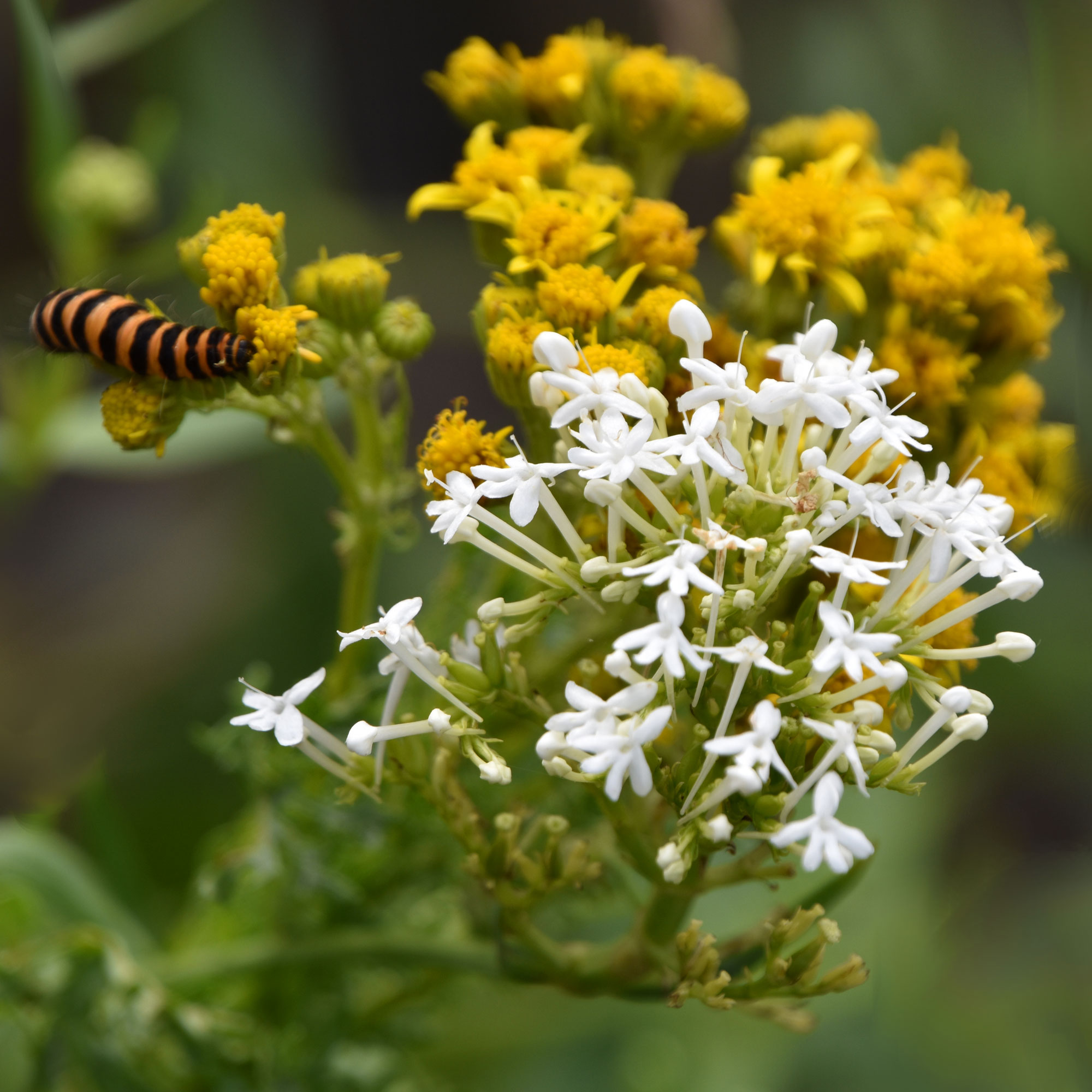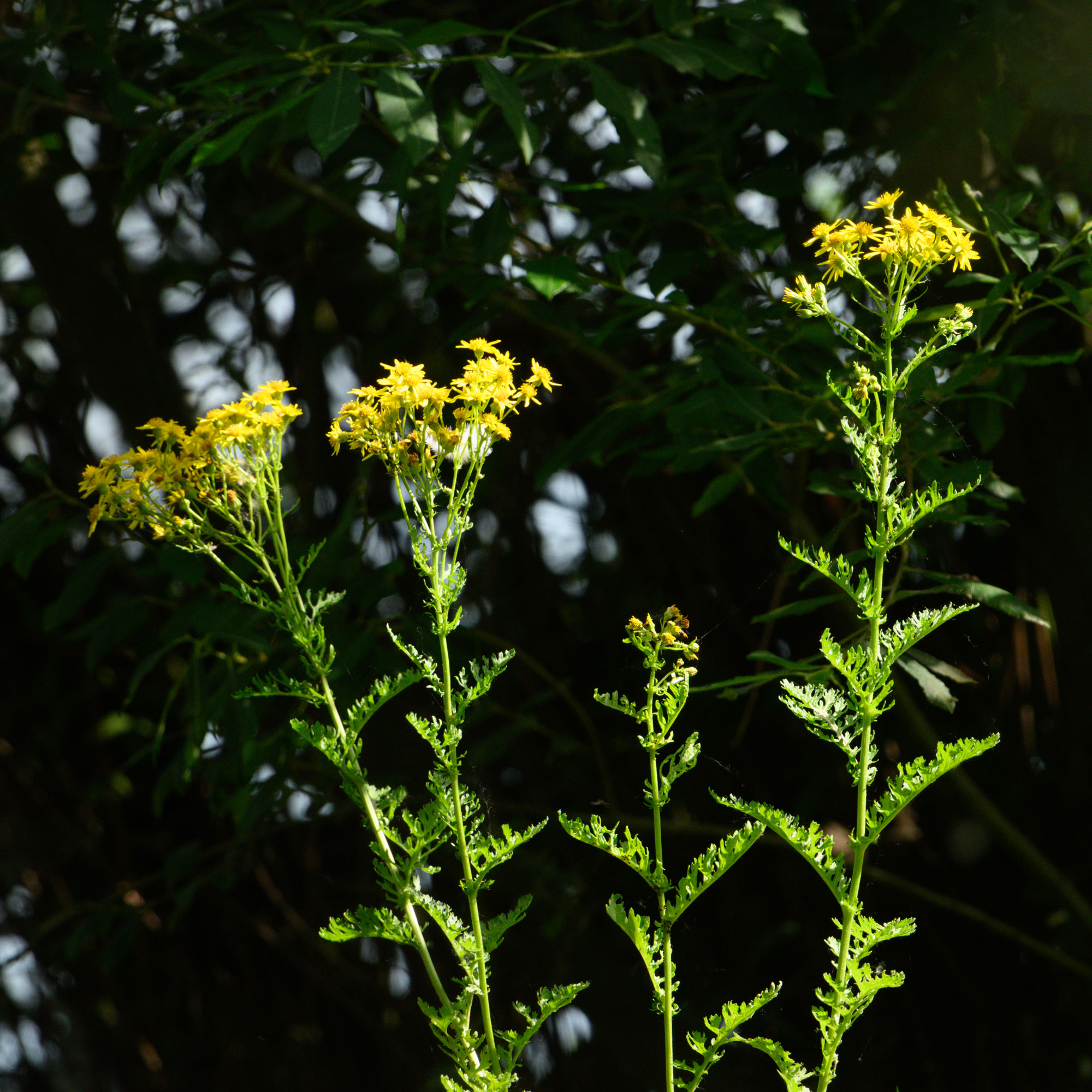
If you’ve noticed ragwort popping up in your garden, you probably have a few questions - from ‘Where did that come from?’ to ‘Should you get rid of ragwort?’ To answer them once and for all, we’ve got everything you need to know about this injurious weed.
Of course, you tend to grow certain plants, flowers, and crops when you have a specific garden idea in mind, but weeds and invasive plants can ruin everything in just a few weeks. They can quickly take over your garden, ruin the aesthetic, and even affect your garden’s ecosystem. That’s why it’s so important to understand how to kill weeds.
But should you get rid of ragwort? Generally considered to be the bad boy of the weed world, you might assume that ripping it out is the best port of call. But it’s a little more complicated than that, as legal implications can determine whether you should get rid of ragwort or not.

What is ragwort?
Ragwort is proof that appearances really can be deceiving. While its bright yellow colour and impressive height seem like it would be a welcome addition to your garden, ragwort - or Senecio jacobaea - is essentially a poisonous weed.
The pyrrolizidine alkaloids present in ragwort make it extremely toxic to mammals such as horses and grazing cattle, and it’s mildly toxic to humans (but only if eaten in very, very large quantities).
But while certain animals should steer clear of this weed, there’s no doubt that others absolutely love ragwort. In fact, around 40 insect species rely on this plant to survive.
John Clifford, gardening expert at Gardenstone, echoes this. He says, ‘Ragwort supports a variety of pollinators, such as bees, butterflies, and even hoverflies. It provides nectar and pollen, and is particularly useful in late summer when other sources may be scarce.’
Ragwort is also the main food source for the distinctive yellow and black striped cinnabar caterpillar, which eventually turns into the equally as impressive red and black cinnabar moth. These cinnabar species actually use the toxicity in the ragwort to become toxic themselves, which ultimately wards off their natural predators.
While some people may never come across ragwort, as it’s typically found alongside railway tracks, cliff edges, on wasteland, and in grazing pastures, that doesn’t mean that it won’t pop up in gardens. After all, ragwort spreads through its seeds, which are picked up and moved by the wind.

Should you get rid of ragwort?
According to the government website, ‘Harmful weeds, also known as injurious weeds, are native to the UK and contribute to biodiversity. Some harmful weeds are poisonous to animals or can damage crops if they spread.’ Unfortunately, this is the case for ragwort.
In fact, the Department for Environment, Food & Rural Affairs have even put together a 55-page document on how to prevent the spread of ragwort. They also state that ‘If you do not follow this code it may be used as evidence in any legal action. But if you can show you have adopted measures in the code of practice, this will help you avoid any fines.’
However, it’s important to note that only some people are legally obliged to get rid of ragwort. As ragwort is poisonous to horses, grazing livestock, and some crops, only those who live on or near agricultural land legally have to get rid of it and take measures to prevent the spread.
If you don’t live on or near agricultural land, you have no legal obligation to get rid of ragwort. In fact, it’s a weed that you could leave in the garden if you really wanted to. This will help to encourage wildlife and aid pollinators.
This might not work in your favour, though. Morris Hankinson, Director of Hopes Grove Nurseries, explains, ‘It is classed as an invasive weed, so it spreads very rapidly, which may cause issues for your other plants. I would suggest proceeding with caution if considering leaving ragwort in your garden, and make sure you keep a very close eye on it!’
Ultimately, if you won’t suffer any legal consequences, it’s up to you whether you want to get rid of ragwort or not.

How to get rid of ragwort
If you legally have to get rid of ragwort or you just want to get rid of ragwort, there are several things you can do. Always pop on a pair of gardening gloves before putting any plan into action, though:
Deadhead immediately: If you don’t mind having a small amount of ragwort in your garden but want to prevent its potentially invasive nature, deadheading the seed pods immediately can prevent the spread. Just make sure that you don’t make any deadheading mistakes. John also advises, ‘You will need to continually monitor the growth of it and make sure that it isn't growing out of control.’
Pull it up: If you want to get rid of ragwort completely, pulling it up is your best bet. This is simple to do, and you should be able to pull it up with your hands. If it’s proving to be a little stubborn, however, you can dig it up with a shovel instead. Aim to remove as much of the root as possible to prevent regrowth.
Use citronella: You might associate citronella candles with repelling mosquitoes, but citronella oils or sprays can also help to get rid of ragwort. Simply cover the plant with a mixture of water and citronella oil and wait for it to kill the ragwort. Just be careful, as this natural weed killer also has the potential to kill other plants around it.
Encourage wildlife: If you want to get rid of ragwort, it’s worth encouraging its natural predators - like cinnabar caterpillars. Morris explains, ‘Because they feed on ragwort, these caterpillars can actually be helpful when it comes to maintaining and stopping it from spreading, which is a more eco-friendly way of dealing with ragwort than with herbicides.’
‘Although, it's important to keep in mind that cinnabar caterpillars will reduce spreading but not stop it entirely, so you still need to keep a watchful eye on your ragwort to ensure it doesn't take over your garden and damage your other plants.’
What you’ll need
To avoid any irritation, you should always wear gardening gloves when handling ragwort. These ones should do the trick - and they're extremely affordable, too.
If you want to make sure that you remove the ragwort roots, this stainless steel spade can help you do that. Simply dig underneath the root ball and lift up.
To make your own citronella spray, simply add a few drops of this essential oil to a spray bottle of water and spray onto your ragwort. It'll work in no time.
FAQs
What happens if you touch ragwort with bare hands?
Ragwort is only really toxic to humans when eaten in large quantities, but you should still wear gloves when handling ragwort. There’s still a chance that you may suffer a reaction to ragwort if you were to touch it with your bare hands, so it’s best not to risk it.
Should I report ragwort?
If you live on or near agricultural land and notice that ragwort is getting closer to your property, you can indeed report ragwort. You can make a complaint on the government website to alert the Department for Environment, Food & Rural Affairs and wait for them to take action.
However, just be warned that the government may not feel it’s necessary to intervene. The government website says, ‘The Department for Environment, Food and Rural Affairs (Defra) does not have the resources to investigate every weeds complaint it receives, so concentrates on high priority complaints where any of the following apply:
- weeds are threatening land used for keeping or grazing horses and other livestock
- farmland used to produce conserved forage, or other agricultural activities
- the complainant has made reasonable efforts to contact the landowner or occupier where the weeds are growing
Where a complaint is not a high priority, Defra will acknowledge your complaint but will only follow it up if resources permit.’
So, your first port of call is to contact the owner of the land with ragwort and ask them to tackle the growth themselves.
So, should you get rid of ragwort? Well, it all depends on where you live, the legalities around it, and your own personal preference.







